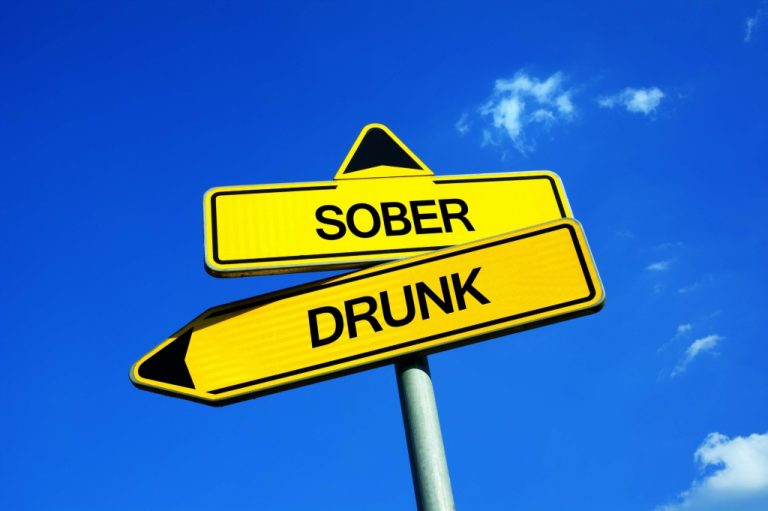Contents:

When addiction is properly understood to be a compulsive behavior like many others, it becomes impossible to justify moralizing about people who feel driven to perform addictive acts. And because compulsive behaviors are so common, any idea that „addicts“ are in some way sicker, lazier, more self-centered, or in any other way different from the rest of humanity becomes indefensible. As you likely know, addictive acts occur when precipitated by emotionally significant events.
No matter how hopeless alcohol use disorder may seem, treatment can help. If you think you might have a problem with alcohol, call SAMHSA or talk to your healthcare provider. They can help you cope, make a treatment plan, prescribe medications and refer you to support programs. Watching a loved one endure the end stages of alcoholism can be frustrating and lonely. The feeling of powerlessness is stifling as you watch someone you care about slowly deteriorate physically and mentally while they may even continue to refuse to admit their drinking is problematic.
Alcohol: History of Drinking
Similarly, according to a 2002 National Institute on Alcohol Abuse and Alcoholism study, about one of every six (18%) of alcohol dependent adults in the U.S. whose dependence began over one year previously had become „low-risk drinkers“ . This modern longitudinal study surveyed more than 43,000 individuals representative of the U.S. adult population, rather than focusing solely on those seeking or receiving treatment for alcohol dependence. „Twenty years after onset of alcohol dependence, about three-fourths of individuals are in full recovery; more than half of those who have fully recovered drink at low-risk levels without symptoms of alcohol dependence.“ The World Health Organization estimates that as of 2016 there are 380 million people with alcoholism worldwide (5.1% of the population over 15 years of age). Substance use disorders are a major public health problem facing many countries.
Fluid buildup in end-stage liver disease is a particularly ominous sign. Fifty percent of patients with ascites typically die within two years if they don’t have a liver transplant. Between 90 and 100 percent of alcoholics develop a fatty liver, which can progress to cirrhosis. Up to 35 percent of alcoholics develop liver inflammation known as alcoholic hepatitis, and 8 to 20 percent will develop cirrhosis, a severe scarring of the liver that hinders the organ’s ability to function normally.
It is important to remember, however, that those who enjoy moderate drinking have little in common with those who insist on drinking heavily. Alcohol can be a safe and enjoyable part of life when people understand not only the effects of alcohol but also what they expect to get from their drinking. A follow-up study, using the same subjects that were judged to be in remission in 2001–2002, examined the rates of return to problem drinking in 2004–2005. The study found abstinence from alcohol was the most stable form of remission for recovering alcoholics.
What are the symptoms of alcohol use disorder?
In fact, as I’ve described elsewhere, addiction is essentially the same as other compulsive behaviors like shopping, exercising, or even cleaning your house. But inside, it is basically the same as these other common behaviors. According to the theory, genes play a strong role in the development of alcoholism. More alcohol https://sober-house.org/ is needed to achieve the same effects due to increased tolerance levels. Furthermore, governments did not give a high priority to enforcing Prohibition. The Harding, Coolidge, and Hoover administrations committed a bare minimum of funds to enforcement; partly as a result, the Volstead Act was widely violated.
Talk to your doctor if you think you might have a drinking problem. Having repeated problems with work, school, relationships or the law because of drinking. You may have wondered why we’re attracted to alcohol, and why some people self-destructively consume it to excess. Problems in designing and interpreting adoption studies result from, among other things, the lack of detailed data on parents who give up children for adoption, and environmental biases . Alcohol use is continued despite knowledge of having a persistent or recurrent physical or psychological problem that is likely to have been caused or exacerbated by alcohol.
Prevention of alcoholism may be attempted by reducing the experience of stress and anxiety in individuals. It can be attempted by regulating and limiting the sale of alcohol , taxing alcohol to increase its cost, and providing education and treatment. The history of the conception of alcoholism as a disease is outlined.
A person can be mellow, tipsy, or tight; plastered, soused, or loaded; dead drunk, under the table, or out cold. Part drink, part food, and part drug, alcoholic beverages are consumed eco sober house price for reasons as diverse as thirst, culinary custom, and addiction. Alcohol is itself a source of calories, and most alcoholic beverages contain traces of other nutrients.
Worldwide, 3 million deaths every year result from harmful use of alcohol. In 2010, the Church described AA as an „effective instrument in rehabilitating drug and alcohol addicts,” while saying it would develop its own alcohol program. A history of the country’s struggle with alcoholism, and why the government has done so little about it. Vomiting can result in severe dehydration, leading to dangerously low blood pressure and fast heart rate. Mixed drinks may contain more than one serving of alcohol and take even longer to metabolize. Other forms of alcohol — including isopropyl alcohol and methanol or ethylene glycol — can cause other types of toxic poisoning that require emergency treatment.
At this point, you have an attachment to alcohol that has taken over your regular routine. You’re aware of the adverse effects, but no longer have control over your alcohol consumption. A moderate drinker might pair a glass of wine with a meal, while a regular drinker uses alcohol to feel good in general. As increased drinking continues, you become more dependent on alcohol and are at risk of developing alcoholism.
- While end-stage alcoholism is a dire situation, it’s not a hopeless one.
- Alcoholism is caused by a mix of genetic, social, cultural, and environmental factors.
- DrugRehab.com provides information regarding illicit and prescription drug addiction, the various populations at risk for the disease, current statistics and trends, and psychological disorders that often accompany addiction.
- But over a large area, such as an entire country, per capita consumption can be estimated fairly well.
The percentage of alcohol-attributable deaths among men amounts to 7.7 % of all global deaths compared to 2.6 % of all deaths among women. Total alcohol per capita consumption in 2016 among male and female drinkers worldwide was on average 19.4 litres of pure alcohol for males and 7.0 litres for females. A major cause of alcohol poisoning is binge drinking — a pattern of heavy drinking when a male rapidly consumes five or more alcoholic drinks within two hours, or a female rapidly consumes at least four drinks within two hours. An alcohol binge can occur over hours or last up to several days. DrugRehab.com provides information regarding illicit and prescription drug addiction, the various populations at risk for the disease, current statistics and trends, and psychological disorders that often accompany addiction.
Treatment for End-Stage Alcoholism
Compared with the temperance view, the alcoholism perspective is relatively new. But in the last 15 years it has shown itself capable of building a powerful institutional base. Like the temperance societies, the alcoholism movement has struck a chord among people who feel that their drinking or the drinking of people close to them threatens to overwhelm the rest of their lives. Also, the alcoholism movement, unlike the temperance movement, has been able to garner support from the alcoholic beverage industry.
In addition, medications may be able to help ease or stop drinking and guard against relapses. The DSM is the latest attempt by doctors to understand and diagnose this disorder. The severity of the AUD depends on how many of the symptoms they have. A hit on six or more questions can be considered a severe case of AUD. Manualized therapy – interventions that are performed according to specific guidelines for administration, maximizing the probability of therapy being conducted consistently across settings, therapists, and clients. Peyote, a psychoactive agent, has even shown promise in treating alcoholism.
These may include inappropriate behavior, unstable moods, poor judgment, slurred speech, problems with attention or memory, and poor coordination. You can also have periods called „blackouts,“ where you don’t remember events. Very high blood alcohol levels can lead to coma, permanent brain damage or even death. Alcohol use disorder is a pattern of alcohol use that involves problems controlling your drinking, being preoccupied with alcohol or continuing to use alcohol even when it causes problems. This disorder also involves having to drink more to get the same effect or having withdrawal symptoms when you rapidly decrease or stop drinking.
Recovery will not be easy at this point, but it will be worth the work. Now is the time to line up support from addiction specialists, mental health professionals, friends and family, and others living with an alcohol use disorder. Within the medical and scientific communities, there sober house boston is a broad consensus regarding alcoholism as a disease state. Current evidence indicates that in both men and women, alcoholism is 50–60% genetically determined, leaving 40–50% for environmental influences. Most alcoholics develop alcoholism during adolescence or young adulthood.
Support for Me and My Family
A report by theNew York Timesconcluded that between 80 and 90 percent of people suffering from alcohol dependency are likely to relapse. As a consequence of a disease concept, it is viewed as a remitting and relapsing illness. If left unchecked, addiction can quickly intensify due to its loss of effects and increased neurological effects. An alcoholic’s use of alcohol causes harm or distress, a condition known as an alcohol use disorder, or AUD, by theNational Institute of Alcohol Abuse and Alcoholism. Homicides are another form of violent death that may be related to drunkenness. Each year about 10,000 murders occur in situations involving alcohol.
Alcohol-Induced Deaths Spiked During the Pandemic – TIME
Alcohol-Induced Deaths Spiked During the Pandemic.
Posted: Fri, 04 Nov 2022 07:00:00 GMT [source]
This book explores some of the private and public initiatives that can help reduce the substantial number of problems caused by drinking in the United States. Specifically, it focuses on those initiatives that can help prevent these problems before they occur or appear to be inevitable. Many of these prevention alternatives have been overlooked or slighted in the past. Verywell Mind uses only high-quality sources, including peer-reviewed studies, to support the facts within our articles. Read our editorial process to learn more about how we fact-check and keep our content accurate, reliable, and trustworthy.
Social barriers
In 1979, the World Health Organization discouraged the use of alcoholism due to its inexact meaning, preferring alcohol dependence syndrome. Continuing Care– Because addiction and mental health disorders are chronic diseases, the ongoing management of symptoms is a necessary aspect of the recovery process. While there is no cure, these illnesses can be effectively managed just like other diseases. The end-stage alcoholic suffers from a host of physical problems, including severe damage to vital organs such as the liver. Alcohol, in fact, is the cause of more than 50 percent of liver-disease related deaths in this country, and alcohol-related liver disease costs more than $3 billion annually. Alcoholism, also known as alcohol addiction, is a chronic disease of the brain that’s characterized by compulsive decision-making, impulsive behavior and relapse.
Delirium tremens symptoms typically begins about three days after other withdrawal symptoms start. It usually lasts for between two and three days, and it can be fatal. Those in the end stage of alcoholism, or late or deteriorative stage, are consumed by their drinking. Years of chronic alcohol consumption have ravaged their body and mind, and their lives revolve around little else other than the bottle. As alcohol consumption increases, the liver adapts to break down alcohol more quickly.


